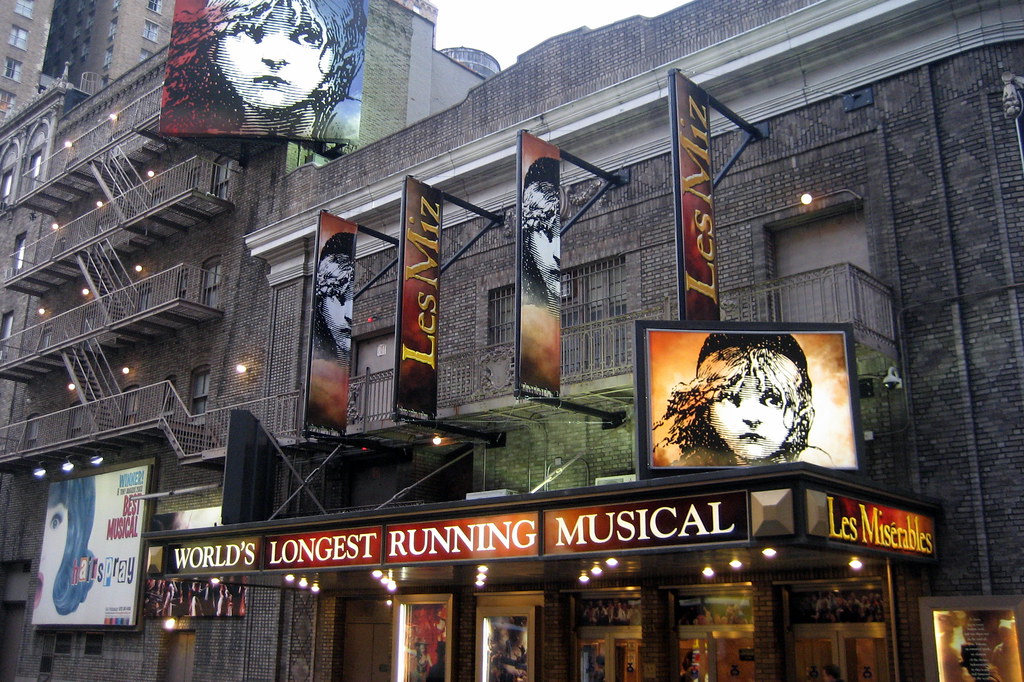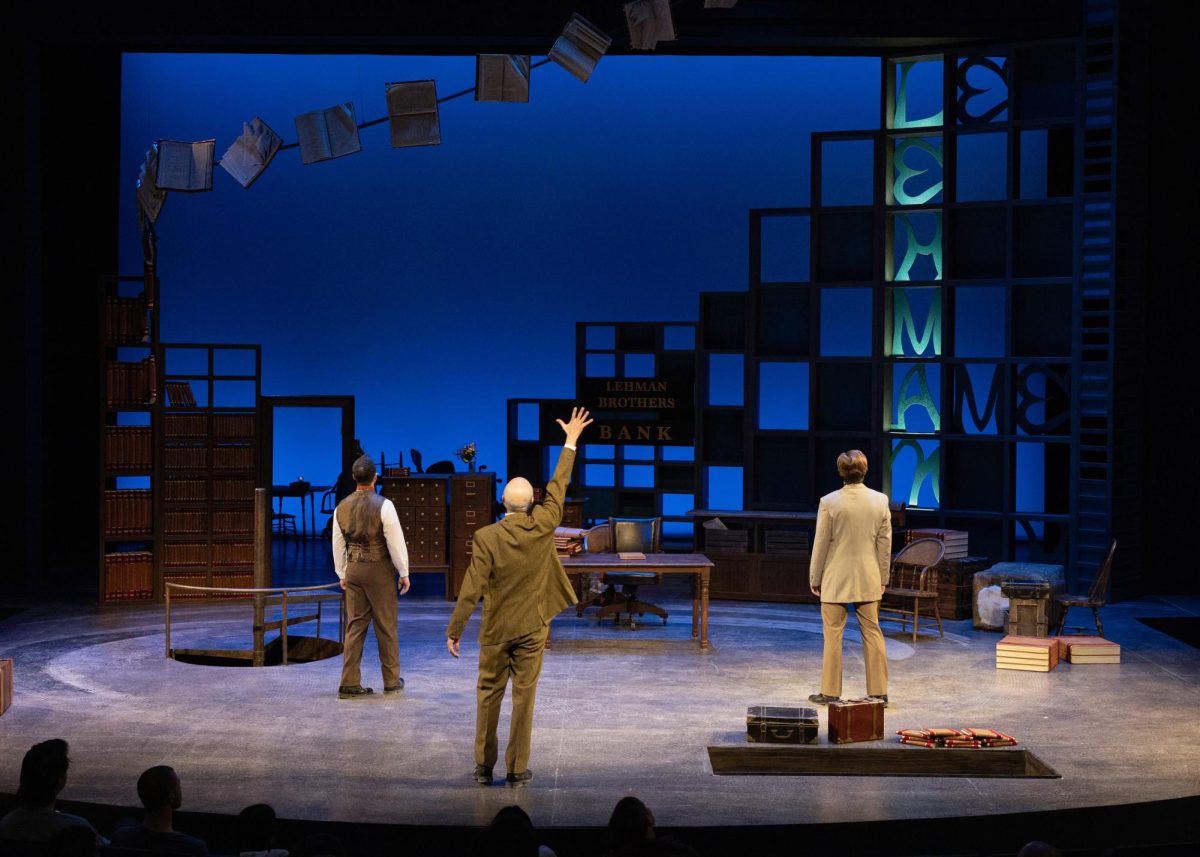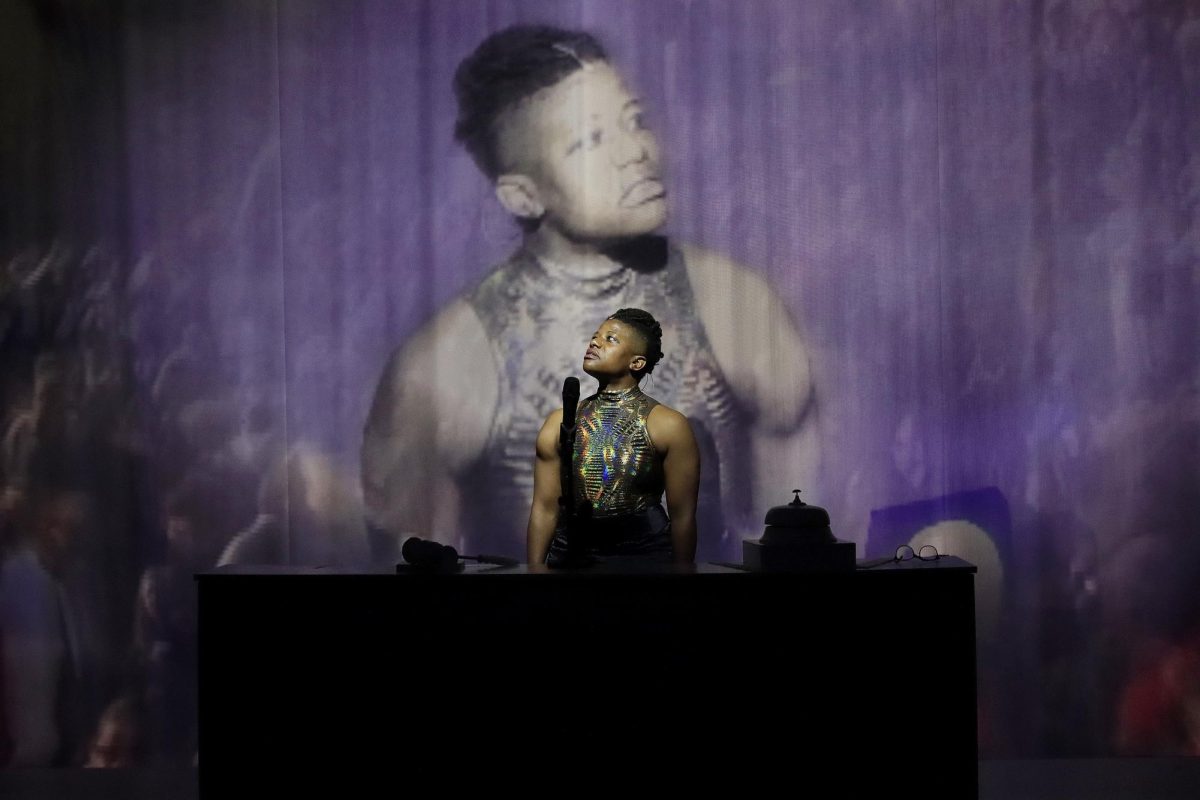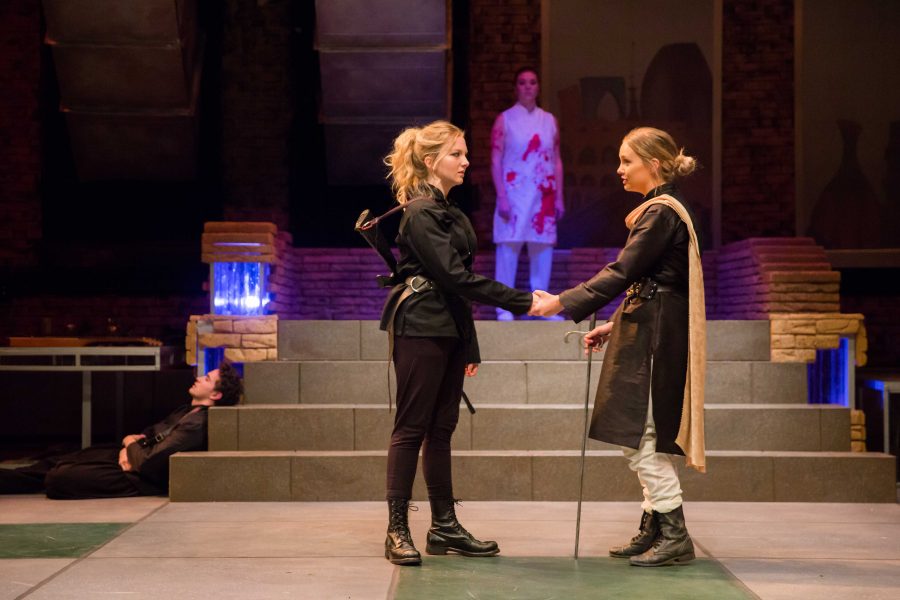When thinking about theater, we often picture comedic sketches, catchy tunes and elaborate dance numbers. Rarely do we find ourselves thinking too much about the way characters are walking or how a fight goes down. Stage combat is a common and extremely important aspect of many productions, however. It creates an illusion of real physical combat to add to a story and it manages to do so without causing any harm to those portraying the fight. In our current state of affairs here at the University of Utah, there has been a lot of sensitivity around violent subjects and scenarios. Theatrical productions have to be cautious about how their audiences will feel about violence. For example, around the time of Lauren McCluskey’s death this past October, Odyssey Dance ended up changing parts of their Halloween show in order to respect the audience’s and performer’s feelings. Not only does the audience need to be comfortable, but those participating in stage combat need to feel especially safe with what they are doing. Combat directors need to address these processes cautiously and create a safe space.
To understand how stage combat is approached in the rehearsal process, we deferred to a couple of individuals who have spent substantial amounts of their professional careers in stage combat and the science behind making it safe. We interviewed associate professor Chris DuVal, head of the Actor Training Program. DuVal has been given the title of Master Teacher from Dueling Arts International. He is also a certified teacher, certified fight director and theatrical firearms instructor for the Society of American Fight Directors. We also interviewed Adriana Lemke, director of audience development at Salt Lake Acting Company. Lemke has worked in collaboration with DuVal often and now serves as a fight director for many local theater programs. The two talked to us about how combat is approached, discussed and how its number one priority is safety.
The Communication Factor
Maintaining a safe and positive environment during performances and rehearsals goes beyond the actions of the actors — there is a specific language which constantly circulates backstage. Instead of using words such as “victim,” “attacker” or “fight,” they say “volunteer,” “operator” and “choreography.”
“There really is no victim in stage combat,” said DuVal. These alternate words distinguish the performance world from offstage events. The stage is a safe haven for students to focus on exploring and developing their voices as artists.
Directors and actors have this established language as well as a mutual understanding of how general communication is essential in the theater. Communication and collaboration create a successful project. As said by DuVal, “Communication between [the actor] and the director is vital to ensure that the story… is being told mindfully and safely and effectively.” With strong communication and conscientious choices regarding the various roles, everyone has the chance to both express personal needs as well as strengthen their characters. People are truly taken care of in these processes. There is no negative sacrifice for the sake of the play.
The Illusion Factor
“The whole premise of stage combat is that it’s an illusion and that it’s more like the magician’s art rather than the martial artist’s,” said DuVal. Within combat, the goal is to give an illusion of the operator who is in charge as attacking, if you will. DuVal said that stage combat is about “making sure that the person who is the volunteer is the one that’s always in control of the illusion.” He explained how if an action looks like it is going in a particular direction, in reality, a pressure or force is going the opposite direction or past the illusioned target. It’s a “reversal of tension,” as put by DuVal. The question then of the illusion factor brings into thought the difference between using weapons versus not, with different styles of combat. DuVal said, “They are the same in terms of basic principles.” Both require the idea of “reversal of tension” and the idea of putting your “energy past your partner.”
No matter what, “[stage combat] can be kind of intimidating,” said Lemke. It truly is a dance and a skill. You are being trained as what DuVal termed, “a magician.” “The fear, I think, sometimes comes less from someone attacking them and handling that, but more from the confidence of, ‘I need to look like I can fight,’” Lemke said. For actors, this is their livelihood. At any point in their lives, actors will more than likely have to participate in a choreographed combat scene. This requires intense training and qualified directors who can really help the actor create a believable illusion while staying safe.
The Safety Factor
Theatricality is important, but safety is of primary concern to directors and actors. “Safety is our number one priority,” said DuVal. “Theatricality comes as a secondary need.” If a scene does not pan out the way the director intended it to, the director and actors try taking a different approach. Actors must be adaptive as well as aware. “Chris has instilled it in me since the beginning, safety, safety, safety, safety, safety,” said Lemke. She explained that one component of being safe is developing an awareness of one’s surroundings. Through being aware and not rushing through the creative process, amazing and safe work can be created.
Part of creating a supportive and safe space is deciding who is in charge of a combat scene. DuVal explained how “the volunteer is the one who’s always in control of the illusion and both parties are working together to ensure that … the illusion is both safe and effective.” Communication and concepts like “reversal of tension” warrant utmost safety and respect for all involved. “One of my favorite things about stage combat is that while you are up on the stage portraying a violent act,” said Lemke, “you are actually taking such good care of the person that you are working with.” This companionship is what makes stage combat scenes possible and successful. “At the end of the day, it’s an easy thing to stand up for… it’s safety… even if collaboration is difficult… safety is the priority,” said Lemke.
Stage combat is an intriguing art form for magicians, not martial artists. It creates illusions, resulting in theatrical elements, which help move the stories along. By approaching this skill with safety and mindfulness of the sensitive nature it may contain, you can truly find the magic behind the illusion.


















